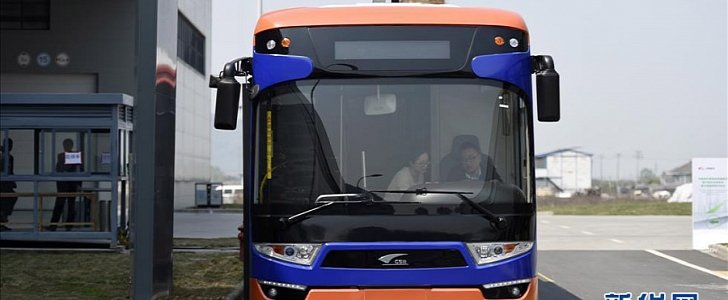How do governmental plans to invest four trillion Yuan ($618.55 billion) in water infrastructure and desalination projects over a ten-year period sound like? However it may seem to you, it’s part of the most populous country’s plan to counter fight their massive environmental issues. These considered it’s no wonder China is the place where the world’s fastest charging electric bus hits the road first.
This impressive amount of funds is also there to complete construction of a flood prevention and anti-drought system by 2020. And we haven’t even mentioned the Communist government’s five-year, $277-billion other major plan to reduce air pollution, particularly in the north of the country.
Nevertheless, the reason we’re talking about China today is related to this unique electric bus that was recently unveiled in Ningbo, a sub-provincial city in northeast Zhejiang province. According to Electric Vehicle News, this lorry takes just 10 seconds to be fully charged. The bus operates an 11-km (7 mi) route with 24 stops and the juice it gets from the stop only lasts for about the time it gets to the next one.
The first of its kind hit the road on Tuesday, but in the next three years, a total of 1,200 of such vehicles will follow, all being used for the public transport in the city. According to the source, the bus recharges while stationary or during the time passengers get on or off. Each e-hit enables the bus to run for 5 kilometers (3 miles).
One of the reasons the city Ningbo was chosen for this impressive fleet is that it’s the hometown of Zhushou Electric Locomotive, a subsidiary of high-speed train maker CRRC.
Moreover, it’s not just the impressive speed it charges with, but also the way it stores its energy.
The bus converts more than 80% of the braking/potential energy - generated during braking and traveling down slopes - into electricity and stores it for recycling. This way it cuts down electric energy consumption by 30% to 50% compared to the conventional bus under the same operating conditions.
Nevertheless, the reason we’re talking about China today is related to this unique electric bus that was recently unveiled in Ningbo, a sub-provincial city in northeast Zhejiang province. According to Electric Vehicle News, this lorry takes just 10 seconds to be fully charged. The bus operates an 11-km (7 mi) route with 24 stops and the juice it gets from the stop only lasts for about the time it gets to the next one.
The first of its kind hit the road on Tuesday, but in the next three years, a total of 1,200 of such vehicles will follow, all being used for the public transport in the city. According to the source, the bus recharges while stationary or during the time passengers get on or off. Each e-hit enables the bus to run for 5 kilometers (3 miles).
One of the reasons the city Ningbo was chosen for this impressive fleet is that it’s the hometown of Zhushou Electric Locomotive, a subsidiary of high-speed train maker CRRC.
Moreover, it’s not just the impressive speed it charges with, but also the way it stores its energy.
The bus converts more than 80% of the braking/potential energy - generated during braking and traveling down slopes - into electricity and stores it for recycling. This way it cuts down electric energy consumption by 30% to 50% compared to the conventional bus under the same operating conditions.
